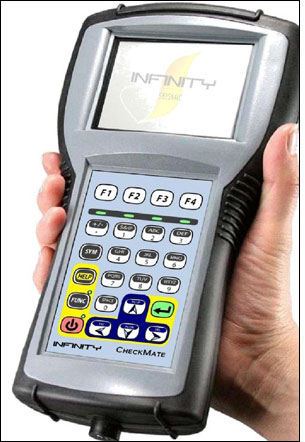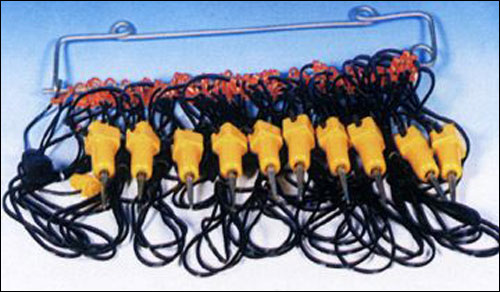Jun 25, 2012Infinity Seismic, a division of electronics development company Divercety, has released an RFID-enabled solution for testing the geophones used by the oil and gas industry to pinpoint appropriate drilling sites. With a passive low-frequency (LF) radio frequency identification tag attached to each string of seismic-testing geophones, as well as an RFID reader plugged into Infinity Seismic's testing equipment, oil and gas companies can better track the results of every test performed on each piece of equipment—and do so in less time than would be required to manually input the ID number of each string being tested—in order to create a record of that testing.
The solution's research and development was done by Vercét, a sister company to Divercety.
To conduct a site survey, a company typically places strings of up to 15 geophones on the surface of the ground, where they can then measure ground movements and convert them into electronic signals with frequencies ranging from 1 Hz to 100 Hz. By searching for deviations in the readings, a geophone user can determine where a potential oil well could be drilled successfully.
Infinity Seismic manufactures geophysical test equipment, including the CheckMate Land unit, which conducts tests to ensure that geophones are operating properly. To ensure that all geophones on a particular string remain in good working order, each geophone is tested independently, and the results must be recorded by those undertaking the tests. Such testing must be conducted as frequently as once a month. For geophone users, this can mean running tests on many hundreds of strings daily.
Tests are often undertaken at oil and gas base camps. Each string of geophones undergoes a test lasting 10 to 20 seconds, in order to ensure that every geophone is functioning properly before it is put into service by a drilling company, or by a seismic-testing firm working for an oil driller.
With a non-RFID CheckMate Land device, a user must manually key a string's serial number into the testing unit every time that string is tested. When a large quantity of geophone strings must be tested, inputting every string's serial number—to be stored in the testing unit's software—can be time-consuming and result in errors if the wrong numbers are keyed in. With RFID, the inputting of each string's unique identifier becomes automatic.
Consequently, Infinity Seismic developed its Checkmate RFID Accessory device, which plugs directly into the tester. The unit, according to Mike Scott, Vercét's project manager and director of research and development in electronics and materials science, is constructed with a Sparkfun Electronics 125 kHz RFID reader module, which can read 125 kHz LF passive RFID tags made with an EM Microelectronic EM4001 chip.
The Checkmate RFID Accessory tester measures 2.86 centimeters by 13.34 centimeters (1.1 inch by 5.3 inches) and plugs into the device via a USB connection. A user would need to acquire compatible LF passive RFID tags and attach them to the end of each geophone string. The user would first commission a tag by placing it within a few centimeters of the reader, and then input a serial number or other identifier. The tag's encoded ID number is linked to the geophone to which it is attached, and is stored in the Infinity Seismic software, loaded on the Checkmate Land device, which interprets and stores read data. As the test is conducted, the details of that testing would be displayed on the unit's screen, as well as stored in the software, linked to the specific tag's ID. Users could then upload that information from the Checkmate Land device, via a USB connection, and manage that data on their own management software.
Since the product's release two weeks ago, Radighieri reports, there have not yet been any end users.
Infinity Seismic is also marketing its CheckMate RFID Accessory as an accessory product for its new CheckMate-Marine hydrophone tester. Hydrophones are used to record sound waves from beneath the Earth's surface, delivering data indicating where oil and gas deposits may be located. The CheckMate-Marine tester is a portable device for testing each hydrophone, in order to verify its ability to provide accurate data.



